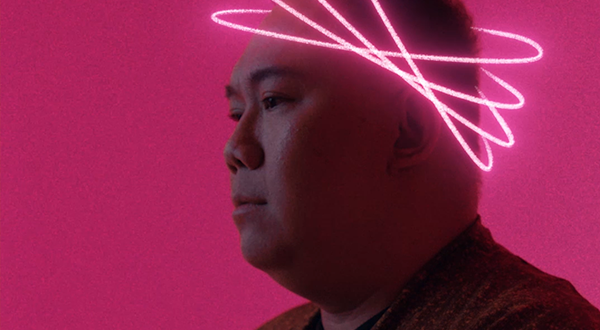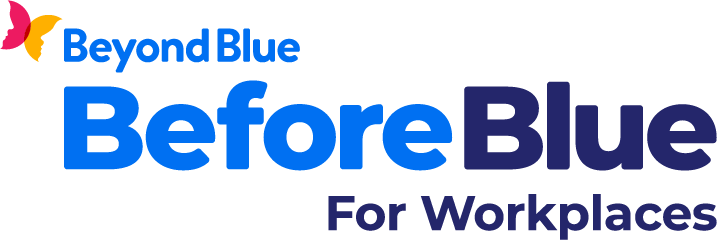Cognitive Behavioural Therapy (CBT)
What is CBT, LiCBT and how it can help you with stress and anxiety
Cognitive Behavioural Therapy (CBT) is a type of mental health therapy based on the idea that what we think and do affects the way we feel.
CBT is one of the most widely used treatments offered by mental health professionals. You can also work through CBT methods with self-help tools, as well as through programs like Beyond Blue’s NewAccess mental health coaching programs.
On this page we’ll explore how CBT works and ways to access this therapy for mental health. We’ll also explore Low Intensity Cognitive Behavioural Therapy (LiCBT), which is a targeted form of CBT for someone is experiencing mild or moderate levels of distress, anxiety or depression.


On this page
What is CBT?
Cognitive Behavioural Therapy (CBT) is a structured, time-limited therapy that helps you identify and challenge unhelpful thoughts and behaviours, and replace them with more adaptive ones. CBT can help with both psychological and physical health problems. It shows us how the way we think (cognition), the way we act (behaviour), and the way we feel (both physical and emotional) are linked.
CBT helps you to identify unhelpful thoughts and behaviour patterns. Unhelpful thoughts and behaviours can make you feel more depressed or anxious and stop you from getting better.
CBT will help you replace unhelpful thoughts and behaviours with new ones that improve how you feel and reduce your depression or anxiety.
CBT is tailored to the unique challenges you’re experiencing, and draws on a range of strategies to help you overcome them and develop more balanced and helpful ways of thinking and acting.


What is Low-Intensity Cognitive Behavioural Therapy (LiCBT)?
Low-Intensity Cognitive Behavioural Therapy (LiCBT) is a form of CBT designed to be accessible for mild to moderate mental health issues, delivered by mental health coaches. LiCBT is a proven therapy that offers high recovery rates, increased accessibility and cost-effectiveness.
“CBT is based on the cognitive model: the way that individuals perceive a situation is more closely connected to their reaction than the situation itself.”
- Beck Institute
CBT was pioneered by Dr. Aaron T. Beck in the 1960s. Since then, more than 2,000 outcome studies have scientifically proven that CBT can help people recognise and change unhelpful patterns of thinking.
Read more about the history of CBT at the Beck Institute
Level 1 - Automatic thoughts
Automatic thoughts are the closest to the surface, the ones that pop into our heads when a situation happens or something triggers a memory or feeling. Automatic thoughts can be realistic and true, but they can also be "biased," meaning they are inaccurate or unhelpful ideas we've picked up about ourselves or others.
Some examples of unhelpful automatic thoughts:
-
(Failing to complete a task): “That was pathetic.”
-
(Talking to a girl I like): “She’ll think I’m an idiot.”
Level 2 - Intermediate beliefs
An example of an unhelpful intermediate belief: “Everyone around me must be happy or I’ve failed.”
Level 3 - Core beliefs
An example of an unhelpful core belief: “I am unlovable/stupid/useless.”
➜ CBT helps you understand how your thinking can get distorted
There can be lots of reasons why we might believe these things. We might have been fed incorrect information as a child, or by someone we look up to. For example, if you were always told by a caregiver that you’re stupid, you’ll be more likely to notice any time you make a mistake or don’t understand something – perfectly normal human experiences, but you’ll be more likely to see that as “proof” of what you’ve been taught about yourself.
Some common ways our thoughts can be biased:
Catastrophising
This is when you imagine the worst possible outcome or see something as much worse than it is (for example, you’re baking a cake for a picnic and you start thinking “what if it turns out terribly and everyone hates it?” even though you’ve baked plenty of good cakes before).Arbitrary interpretation
This is when you form a conclusion about a situation without any evidence, or even against the evidence. For example, while you’re talking to a shopkeeper you might think, "They think I'm ugly," even though there's no proof of that.Personalisation
This is when you blame yourself for everything, even things you have no control over, or take something personally (for example, thinking someone hasn’t called you back because they don’t like you, not because they might be busy.)Selective abstraction
This is when you focus on one detail out of context and ignore other important parts of a situation. For example, you get a B+ on a school assignment with plenty of positive comments from the teacher, but you focus on the comment about how it could be improved, and you think "I did badly."Overgeneralising
This is when you make a broad conclusion based on a single event or a small amount of information (for example, you fail one geography test. You might start thinking, "I'm terrible at geography and will fail every test from now on," even though it was just one test.)Magnification and minimisation
This is when you exaggerate problems or downplay your achievements. For example, if a friend calls to say they'll be late to a meet-up and you think, "Well, the evening is ruined," that's magnification. If your first thought when you receive a promotion at work is "I was just lucky," you might be minimising.
Student A is catastrophising, expecting it to go badly without any evidence that it might. These thoughts can trigger physical symptoms of fear, which causes a cycle of worry.

Student B is telling themselves that nerves are normal, and they can use that energy positively. They can feel excited and focus on the presentation, not on their worries.
It’s really common to start feeling ashamed of the discomfort and fear, so they might start avoiding friends and other social situations. This can lead to a spiral of avoidance and feeling worse.
The good news is that Student A can learn to think more helpfully about what might happen and grow more comfortable in that situation.
What can CBT help with?
- CBT can be a helpful therapy for a range of mental health issues including depression and anxiety, trauma and post-traumatic stress disorder (PTSD), social anxiety, panic attacks, health anxiety, obsessive-compulsive disorder (OCD), phobias, sleep disorders, eating disorders, substance abuse and problem gambling, migraines, fibromyalgia and chronic pain.
- CBT has been proven to be helpful for children, teenagers, and adults.
- CBT has been shown to improve quality of life for people managing serious mental health illness such as bipolar disorder, schizophrenia and dementia.
- There are some specialised forms of CBT as well. CBT-I (Cognitive Behavioural Therapy for Insomnia) is one of the top recommended therapies for chronic insomnia and CBT-E (Enhanced Cognitive Behavioural Therapy) is a therapy designed for eating disorders.
- Low-Intensity Cognitive Behavioural Therapy (LiCBT) is a brief and targeted form of CBT that can help with symptoms of anxiety and depression occurring during difficult life experiences.
How is LiCBT different to CBT?
- LiCBT is a brief and targeted form of CBT designed for mild to moderate mental health concerns.
- LiCBT may involve fewer sessions and short contact times than other forms of CBT, and can be delivered by specially trained practitioners or coaches.
- LiCBT can be delivered through guided self-help materials, like workbooks or online resources.
- LiCBT works within a stepped care model - that means you can step up to appropriate high-intensity mental health services if needed or step down to self-management as your situation or mental health improves.
The program helped me enormously. I started to feel less lonely. I got my feelings of overwhelm under control. I am so grateful for the program and would recommend it to any small business owner out there. You don’t have to go through this alone."
Meg, NewAccess for Small Business participant

Mental health professional-guided CBT
A mental health professional can personalise CBT activities to suit your situation and needs, and you have some control over the course of the therapy, building your confidence through the process.
A mental health professional doesn’t need a special license to practice CBT, but it's best to find a mental health professional with proper credentials, and specialised training and experience. It's also important to feel comfortable with your therapist.
What happens in CBT sessions?
In your first CBT session your mental health professional will talk through the challenges you’re facing and help you to set some goals. They’ll consider your situation and decide with you the best strategies to use.
CBT is a “doing” therapy. A lot of the work happens in between sessions with your mental health professional, where you might be practicing skills, trying out new behaviours or keeping logbooks or diaries. Some of these things might be challenging, and that’s often the point, but a good mental health professional will always travel at your pace and not push you into anything you’re not ready for.
In sessions you might:
- learn about how your thoughts, behaviours and feelings are linked
- recognise some patterns in your thinking and behaviour
- recognise some of your core beliefs, and how they might be affecting you
- design activities for you to do between sessions, discuss how they’re going and change or add other ideas
- learn some techniques and coping strategies, such as breathing or relaxation techniques.
Self-guided CBT
For people with mild or moderate symptoms, self-guided CBT can be helpful. If you want to try CBT for yourself without a mental health professional, there are many books, online tools and apps. Be cautious about any app or program that promises instant success or asks for a lot of money or personal details.
Some CBT-based resources to explore
- Lifeline - A simple CBT journaling tool to get in touch with your thoughts, feelings, and behaviours about situations.
- MoodGym - A self-paced, interactive online program that uses CBT and Interpersonal therapy techniques.
- This Way Up - Programs for teens and adults, all based on CBT. Some of the programs are free, others are paid or free with a prescription from your doctor.
- MentalHealthOnline - CBT-based programs for depression, social anxiety, PTSD, OCD and panic, developed by the National eTherapy Centre (Swinburne University).
- MindSpot - Free, confidential psychological assessments and treatments, and access to qualified therapists.
- SMARTRecovery - Grounded in CBT, a recovery method supporting people with substance dependencies or problem behaviours to lead a balanced life.
- The Centre for Clinical Interventions (CCI) - The CCI has some great self-help resources including resources based on CBT.





